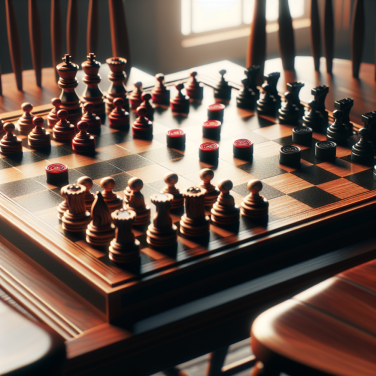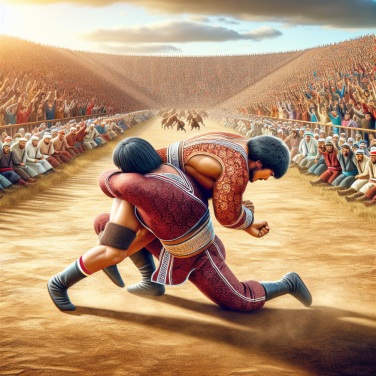Advanced Strategies for Achieving Pinpoint Accuracy in Throwing Disciplines
Achieving pinpoint accuracy in throwing disciplines requires an athlete to refine their technique, develop a keen understanding of their biomechanics, and practice consistently. Expert throwers integrate advanced strategies into their training regimen to surpass their competitors and reach new levels of performance.
One crucial aspect of improving accuracy is enhancing grip stability. Athletes should experiment with different grip styles to determine which provides the most control over the implement, whether it be a discus, javelin, baseball, or dart. A secure grip translates to a more consistent release point, which is paramount for accuracy.
The second important advanced strategy is the optimization of the kinetic chain. Every throw involves a complex sequence of body movements that must be coordinated to transfer energy efficiently from the larger muscle groups to the object being thrown. Stronger and more explosive leg drive, stable core activation, and a whiplike action of the arm can significantly improve throwing precision. Athletes should work with coaches to analyze and perfect their kinetic chain through targeted exercises such as Olympic lifts, plyometrics, and medicine ball throws.
Mental visualization techniques are another tool that can sharpen an athlete's accuracy. By mentally rehearsing the perfect throw, athletes can subconsciously guide their muscle memory to replicate the visualized technique during actual performance. This practice should involve imagining the trajectory, the target, and the sensations of each movement in the throw.
Fine-tuning release mechanics is also pivotal in achieving accuracy. Athletes must pay attention to the timing, angle, and speed of release. Minute adjustments can lead to significant improvements, and this precision often comes down to fractions of a second in timing or millimeters in alignment. High-speed video analysis can aid athletes and coaches in identifying inconsistencies and making the necessary corrections.
Consistency in practice conditions is essential for mastering precision. Athletes should strive to replicate competition conditions as closely as possible during training. However, they should also train under varied conditions to be adaptable to unexpected situations such as changes in weather, wind patterns, or tournament pressure.
Quantitative feedback mechanisms, such as radar guns, laser measurement devices, and advanced motion-capture technology can provide precise data about throw velocities, angles, and distances. These measurements allow for concrete assessment of an athlete's progress and the effectiveness of their techniques, which can be incredibly beneficial for fine-tuning performance.
Lastly, recovery and injury prevention are key to maintaining and improving precision in throwing. Dedicated stretching, strengthening of supporting muscles, and proper nutrition help keep an athlete's body in top condition.
Read also:
Lionel Messi's Soccer Journey: The Early Days Unveiled
Honing Your Technique: Essential Tips for Precision Throwing
Precision throwing is a skill that requires meticulous attention to detail, practice, and a deep understanding of your own throwing mechanics. Whether you're an athlete looking to perfect your pitch, a dart enthusiast aiming for the bullseye, or a potter creating symmetrical pieces on the wheel, honing your technique is crucial.
**Understand the Mechanics of Your Throw:** To achieve consistency in your precision throwing, it's vital to break down the mechanics of your throw. This could involve analyzing the grip, the wind-up, the angle of release, and the follow-through. By understanding each component, you can make small, informed adjustments that can lead to significant improvements.
**Develop a Consistent Routine:** Consistency is key in precision throwing. Establish a routine that you can perform every time you practice or compete. This routine can help condition your muscle memory and reduce variability in your throws. Make sure your routine includes warm-up exercises that mirror the movements you will perform during the throw to prime your muscles for action.
**Focus on Your Stance and Balance:** Your stance is the foundation of a good throw. Start by ensuring that your feet are positioned correctly, usually shoulder-width apart, to provide a stable base. Balance also plays a crucial role, with your weight distribution affecting the power and direction of the throw. Practicing proper balance can prevent overcompensation and loss of control during the throw.
**Practice Mindfulness and Concentration:** The mental aspect of precision throwing can't be underestimated. Being able to concentrate and remain calm under pressure will allow you to perform the mechanics of the throw with greater accuracy. Mindfulness techniques can help you maintain focus and eliminate distractions, allowing for a clearer mind when executing throws.
**Use Visualization Techniques:** Visualizing the successful outcome of a throw can enhance your ability to perform it physically. By creating a mental image of the throw, you can set a clear target for your mind and body to achieve. Visualize not only the path of the throw but also the feeling of the movements you will make.
**Refine Your Grip:** Different throws require different grips. Whether it’s how you hold a baseball, a dart, or a pottery tool, refining your grip to find what works best for you is essential. Experiment with slight changes to determine how they affect your throw's precision and adjust accordingly.
**Adjust Your Release Point:** The point at which you release the object you're throwing is critical in determining its trajectory.




